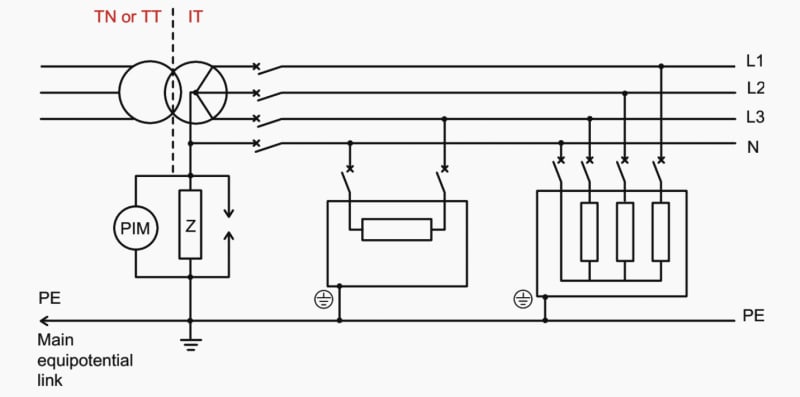Carlos Melim
Electrical
Hello everybody.
I’m planning an IT earthing system to feed some emergency pumps within an existing building.
The existing electrical installation is on a TT scheme.
There will be, of course, a specific LV/LV transformer with a Permanent insulation monitor.
I will install an equipotential cable between the transformer, the drives and the pumps.
But I can’t isolate all the metallic elements from the building protection earth.
If there’s a phase to earth fault, 1st fault, the pumps will still work but the building PE cables voltage level will be the one of the IT system faulty phase.
Will there be damages to other single phase electrical equipments of the building?
I think the potential difference between the phases of the TT system and the PE cable will not to result in any current.
Should I rigidly connect the equipotential cable to the PE of the building?
I am looking forward to hearing your advices.
Best regards.
Carlos Melim
I’m planning an IT earthing system to feed some emergency pumps within an existing building.
The existing electrical installation is on a TT scheme.
There will be, of course, a specific LV/LV transformer with a Permanent insulation monitor.
I will install an equipotential cable between the transformer, the drives and the pumps.
But I can’t isolate all the metallic elements from the building protection earth.
If there’s a phase to earth fault, 1st fault, the pumps will still work but the building PE cables voltage level will be the one of the IT system faulty phase.
Will there be damages to other single phase electrical equipments of the building?
I think the potential difference between the phases of the TT system and the PE cable will not to result in any current.
Should I rigidly connect the equipotential cable to the PE of the building?
I am looking forward to hearing your advices.
Best regards.
Carlos Melim

